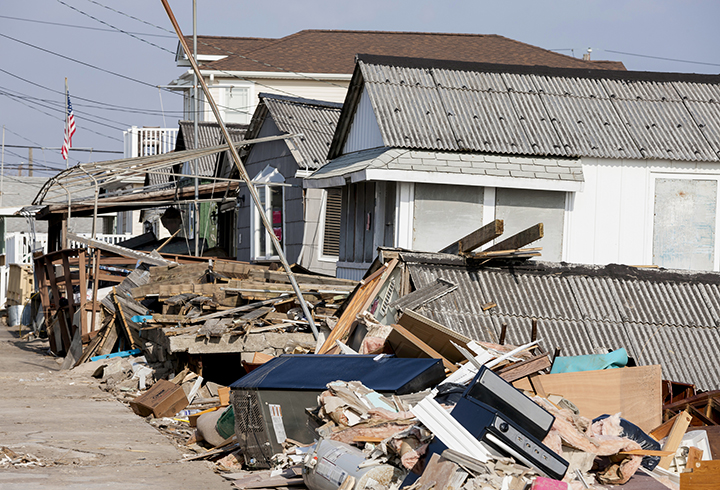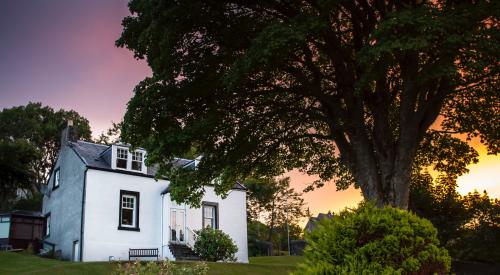When something breaks, more often than not our first inclination is to repair it. One could even argue our second inclination would be to proactively fortify and protect it from future damage.
It's a simple principle that's applied to many things, but when it comes to extreme weather events, that's not always the case. In the event of a natural disaster, cleaning up and rebuilding is a top priority, but according to the Federal Emergency Management Agency (FEMA), being able to effectively and sufficiently address the housing needs of those affected by disaster is a constant issue, and a longstanding one at that.
"Future homes and buildings need to be able to sustain themselves through pretty much any disaster in the short term as well as within the next 100 years," - Joel May, Resilient Construction, Disaster Durable Solutions®
With weather events like hurricanes only expected to become bigger and more intense, it's important to realize we can no longer take a reactive approach to hurricane preparedness, especially when it comes to the structures that are supposed to protect us: our homes.
Hurricane Season - Faster, harder, stronger and farther reaching
On October 11, 2018, Hurricane Michael made landfall in Mexico Beach, Florida and caused an incredible amount of devastation.
Unimaginable devastation in #MexicoBeach. These are before and after images showing the incredible damage caused by #Hurricane #Michael. Our crews are LIVE in Florida with the latest on recovery efforts. #HurricaneMichael pic.twitter.com/lkEg5Lhdy6
— The Weather Channel (@weatherchannel) October 12, 2018
Yet, the force of this hurricane was not isolated to Florida. Georgia experienced high winds that reached as far north as Atlanta and Athens.
Far-reaching extreme weather and stronger storms also brings about another reason to get behind the call to build with resilience in mind: billions of dollars in damages.
To give some perspective, Hurricane Katrina landed on August, 2005 and is estimated to have cost $125 billion. Hurricane Harvey, a category 4 hurricane, landed on August, 2017 and cost another $125 billion. Furthermore, nine out of the top 10 costliest Atlantic tropical storms occurred in the 2000s.
Since climate change specialists expect this to become the new normal, it's imperative for architects, home builders and construction materials manufacturers to come together and proactively build and retrofit homes that can stand up to extreme weather.
Strengthening structures by strengthening collaboration
This collaboration has already begun. In 2012, Hurricane Sandy became the fourth-costliest hurricane in U.S. history with damages totaling $68.7 billion (2012 USD). While it's easy to put a financial number to the destruction, it's not as simple to place a value on the destruction of one's livelihood and peace of mind.
That same year, BASF created Disaster Durable Solutions®. A division of BASF Performance Materials, Disaster Durable Solutions® resilient construction methods were developed to withstand the impact of extreme weather by improving the durability of homes, buildings, coastal landscapes and critical infrastructure. In short, Disaster Durable Solutions® aims to go beyond insurance, energy and industry requirements to help preserve homes and livelihoods.
“Future homes and buildings need to be able to sustain themselves through pretty much any disaster in the short term as well as within the next 100 years," said Joel May, Resilient Construction, Disaster Durable Solutions®. “By thinking through all aspects of the build; design, material selection and assembly, we can create a building envelop that is able to communicate with all of its components from the foundation to the rafters and the Neopor® insulation and closed-cell foam in between. Achieving such a feat wasn't one we could do alone, though."
Soon after, Disaster Durable Solutions® joined the #HurricaneStrong program, developed by the Federal Alliance for Safe Homes (FLASH). Together, they chose a home in Breezy Point, NY that was devastated by Hurricane Sandy to prove that building resilient homes begins with industry leaders coming together and taking the lead.
“Breezy Point is quite a vulnerable place when it comes to extreme cold, fire, lightning strikes and even earthquakes so it made perfect sense to build this living, breathing example of what we can achieve," said May. “At the end of the day, it's collaboration between industry partners that will push innovation forward and we're seeing that here. There's been genuine excitement surrounding the project from the start, not only from our partners but the neighborhood, too. There's no better way to build a hurricane-strong home than with polyurethane and concrete and I'm happy to see that the local construction industry and those who live in Breezy Point are starting to see the real value that comes with building a home like this."
Construction on the Breezy Point home has completed and the owner is getting ready to move into their new, FORTIFIED® Designed home shortly. Be sure to view the progress from day one below in this time-lapse video.
Designing for resilience in the built environment may not be a new idea, but it is one that needs to be incorporated more into what we think of when we talk about sustainable construction. BASF's Disaster Durable Solutions®, along with their industry partners, are ready to take the charge in changing how we think about the built environment. To learn more about the building methods and how they can collaborate with you on your next project, click here.












